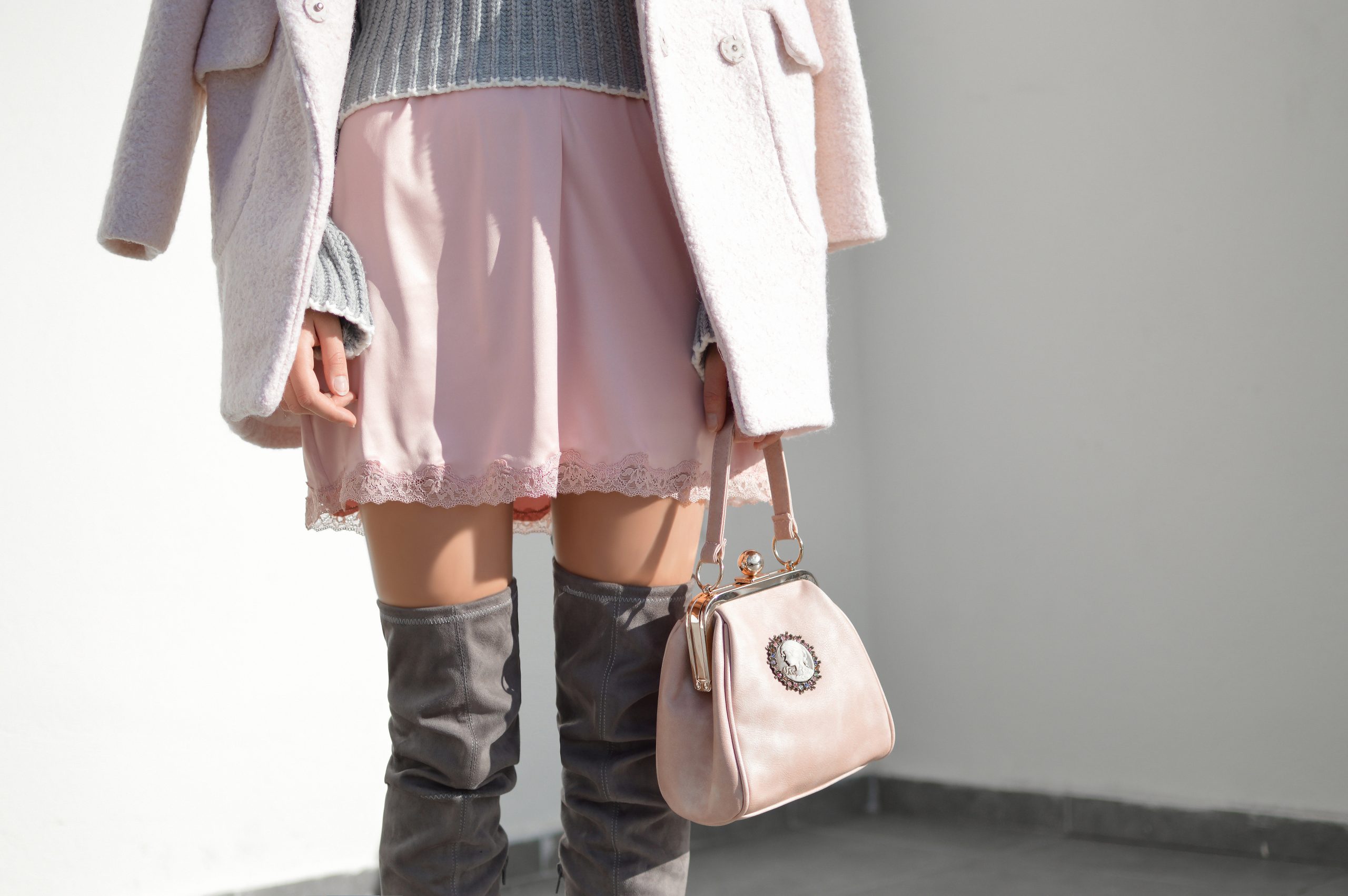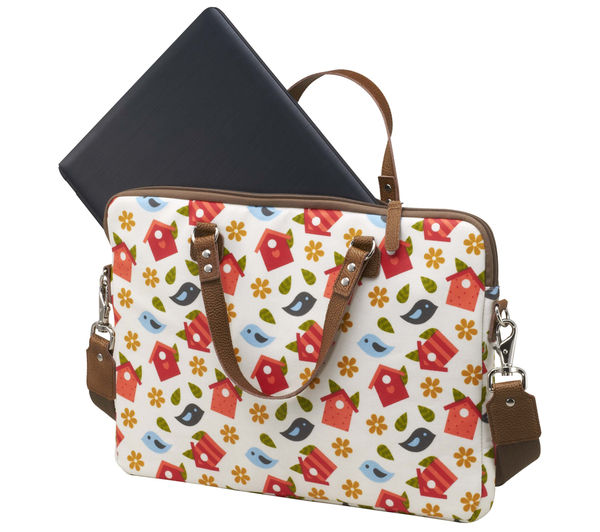Shooting accessories for eCommerce can be lots of fun, small enough to move, and let you explore different angles and lighting setups while offering lots of opportunities for expressing your creative side when it comes to art direction.
In fact, one of my favorite fashion items to shoot are handbags. They come in all shapes, sizes, colors, and bags (excuse the pun) of features. My aim when shooting handbags is to try to communicate the handbag’s personality through the images I take.
Here are my top tips for shooting handbag photography that sells:
1. Get the stuffing right
A good-looking handbag is packed and perky – fulfilling its potential as a carrier of objects. In contrast, a flat, floppy and lifeless bag is far from attractive. It’s therefore important that you get the stuffing of the bag just right, showing the bag’s form without making it look too stuffed or too empty. You have a variety of options when it comes to stuffing your bag, from tissue paper and newspaper, to bubble wrap – all of which do well at making your bag look shapely and ready to do its job.
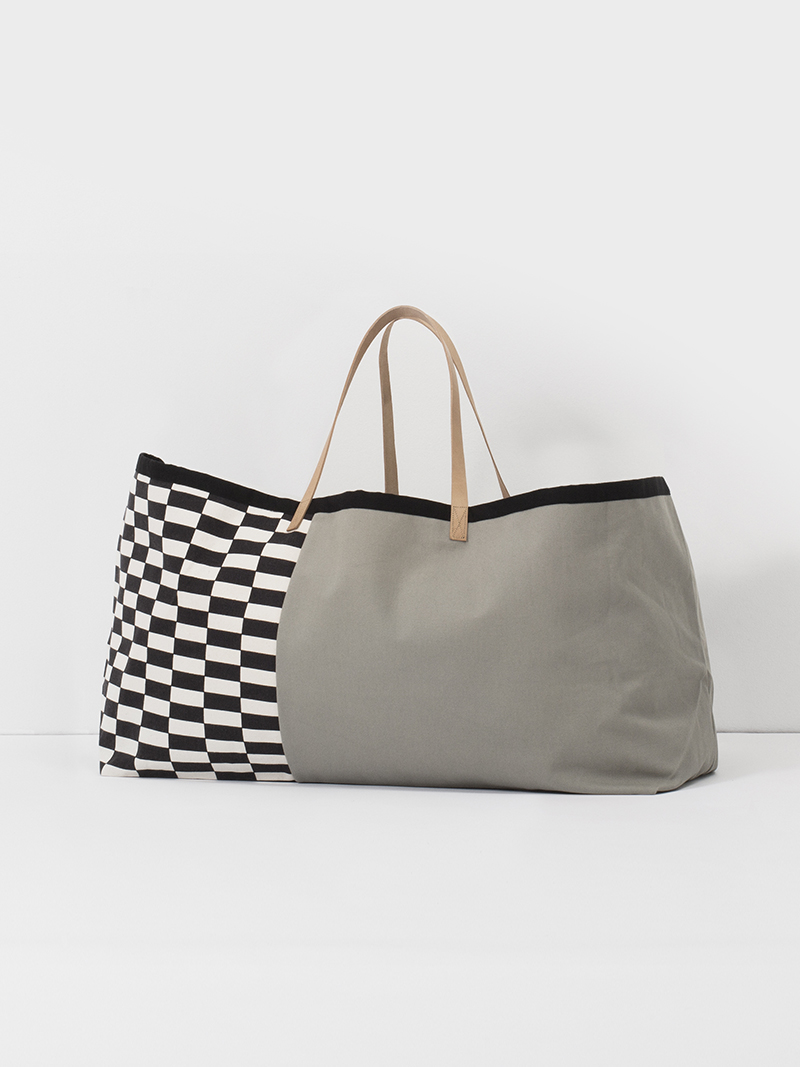
Source: ferm LIVING
2. Remove dust, smears and stains
Make sure the handbag exterior is free from dirt or dust. Compressed gas duster cans can be really good at getting rid of dust while avoiding additional smears and stains that can be created by using a wet cloth. Shiny patent leather and plastic handbags can be the hardest to clean as studio lighting highlights the minutest smear. In this case, try using a dry duster to polish the surface.
3. Show off the straps
One of the key features of many handbags is its straps. So, it’s important to make sure the straps are arranged in an appropriate manner that shows them off while not looking out of place. A good tip here is to use fishing wire to hold them to their shape. Alternatively, you could get creative and hang the bags from the ceiling.
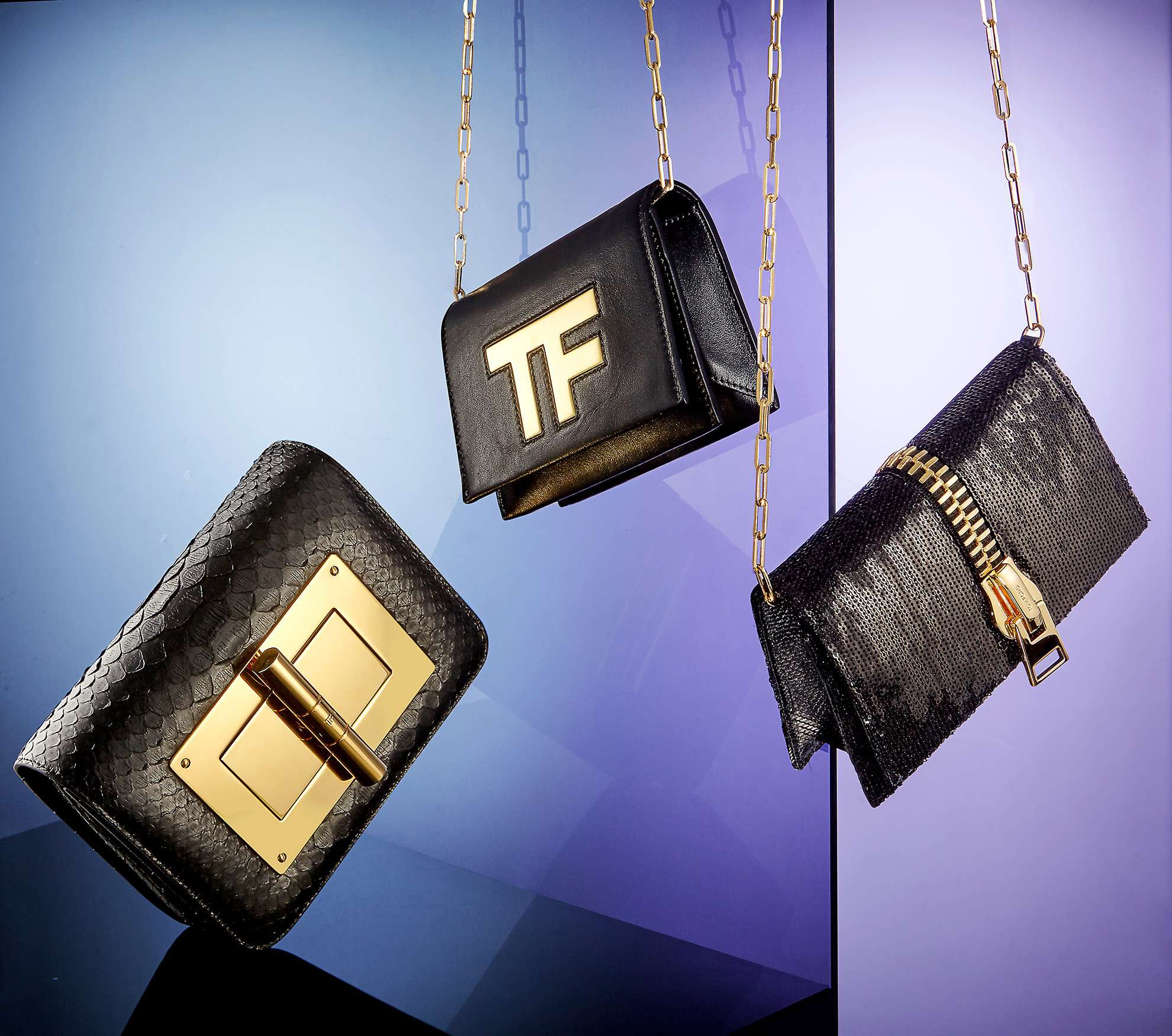
Source: Howlett Photo
4. Avoid harsh or direct lighting
As with all other types of eCommerce photography, lighting is crucial. Avoid harsh or direct lighting which can cause unsightly shadows or glare. Lighting setups can be tricky to get right, so play around with a few options. Natural daylight is fantastic if used correctly but can be less consistent than studio lighting. Explore your options carefully, and select the right one for your budget and location’s limitations.
5. Communicate the bag’s intention
By that I mean, communicate what context the handbag is designed for. Is it an evening bag, designed for carrying just your cosmetics and a set of keys? Or is it a work handbag, designed for your laptops, notebooks and everything else you’d need to get through a productive workday? Whatever its intended use, try to communicate it in your product photography by focusing on features and adding context.
Source: Currys
6. Watch out for reflections
If you’re shooting shiny material, whether it be leather or patent, you need to be careful to avoid reflections in the bag’s material. The reflection could be lighting or (at worst, if the bag is really shiny) your own image looking back at you! Post-production can reduce reflection issues, but it’s always preferable to avoid reflections and shine altogether while shooting.
7. Shoot with context
A great way to communicate the bag’s intention is to shoot it in context. For example, shooting with a model using the bag on location. In addition to using white background shots, models on location can help tell a story. What kind of look will the handbag go with, and what kind of use will it serve? If you don’t have the budget for a model shoot, another great way of shooting a bag and telling its story is to use still life imagery. For example, shoot the contents of the bag laid out alongside it to give the customer an idea of what the bag is designed to carry.
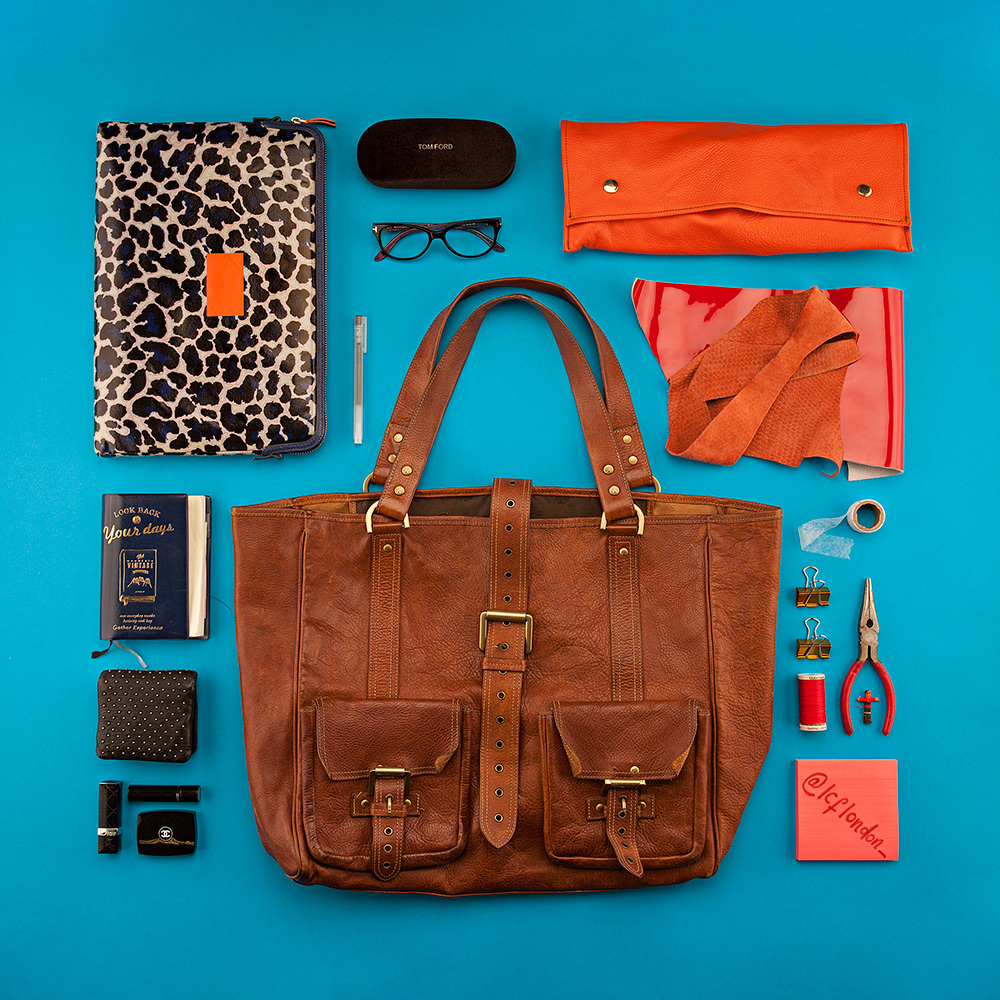
Source: London College of Fashion News
8. Capture textures
As any handbag fanatic will tell you, one of the most important features of a handbag is the material used and the resulting textures from it. A handbag’s value will be significantly more if it’s made of beautiful, soft goat leather rather than cheap shiny ‘pleather’. For this reason, it’s important to optimize your lighting setup to capture the bag’s texture and feel. Also, remember to optimize for zoom so that the user so they can zoom in to view the texture in more detail.

Source: Paul Schlemmer
9. Get creative with art direction
As most eCommerce sellers know, white background images are the gold standard of product photography, ensuring consistency and clarity for buyers. However, that doesn’t mean you shouldn’t consider adding some creative, art-directed shots to your shoot. Handbags are fashion after all, and fashion photography always benefits from having a concept. If your site doesn’t lend itself to creative images, why not shoot for social media?
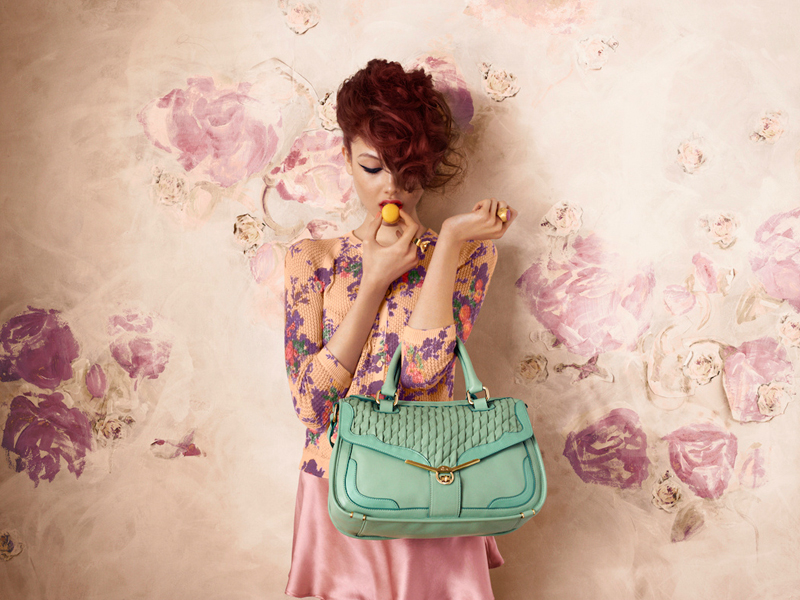
Source: Pinterest
10. Shoot on an aperture of 8.0 or higher
Your handbag images should be crisp, clear and in-focus. The depth of field has its place in creative photography, but when shooting product images, particularly clothing and accessories, you should aim to have every part of your handbag in focus, avoiding distraction for the viewer and ensuring they can see every part of the handbag in all its glory.
There’s a lot there to digest here, but if you follow these steps, you’re well on your way to shooting beautiful handbag photography and increasing those online conversions.
Have you seen any great examples of handbag product photography while browsing the internet?
If you need help editing your handbag images, give us a shout.

